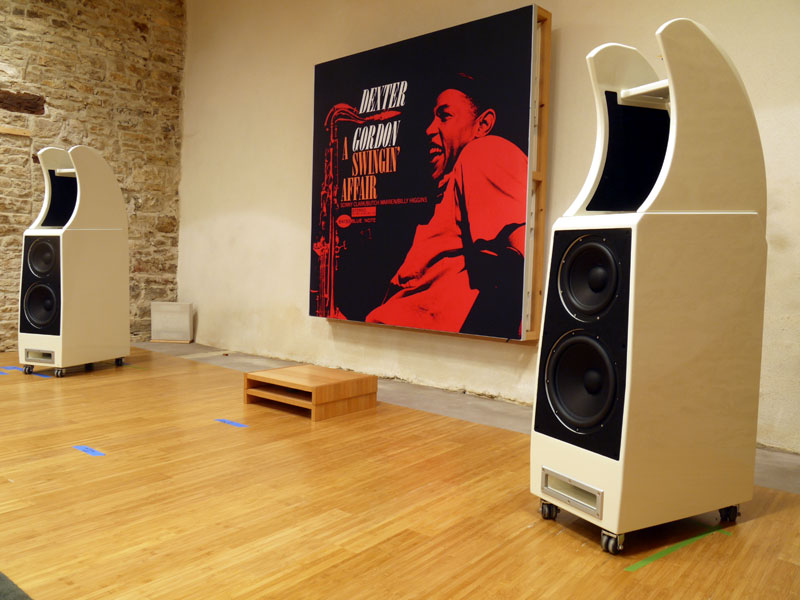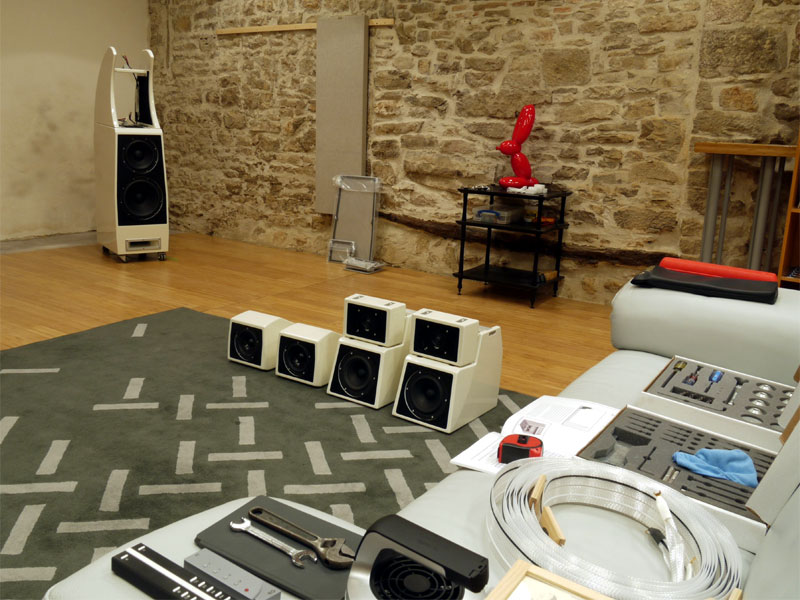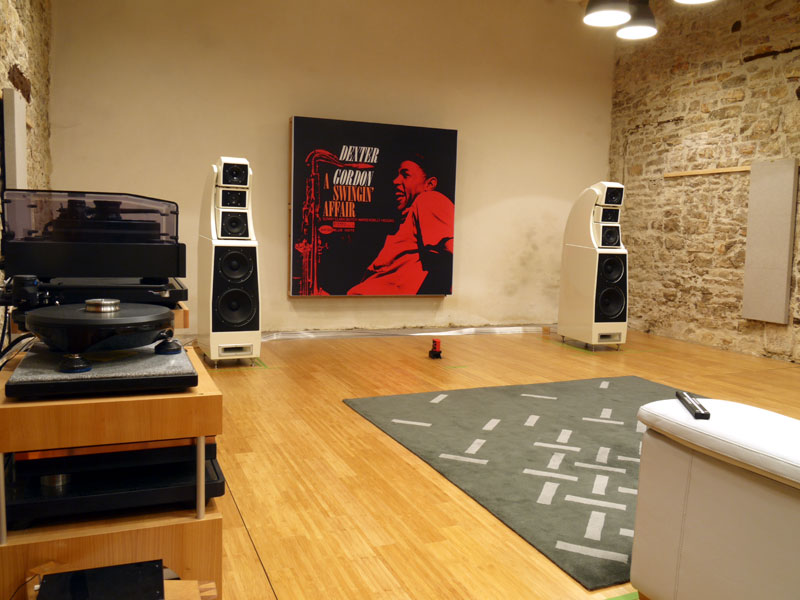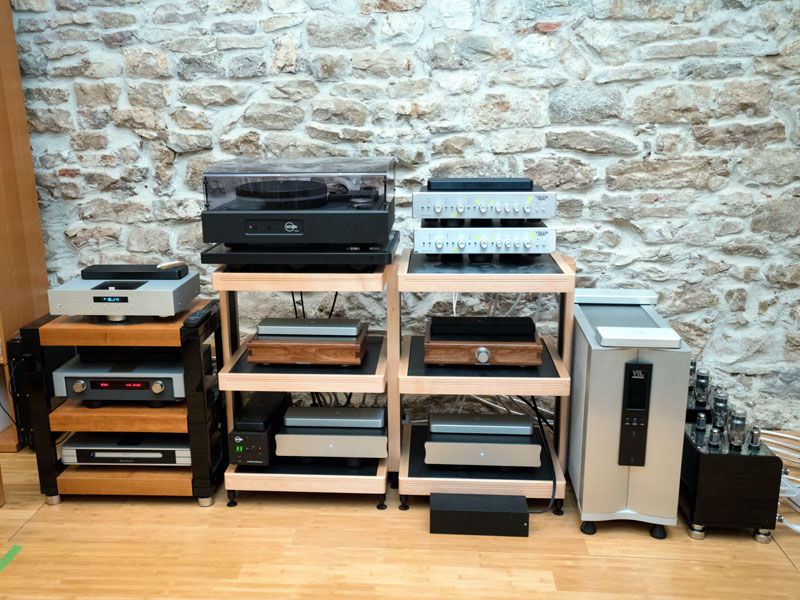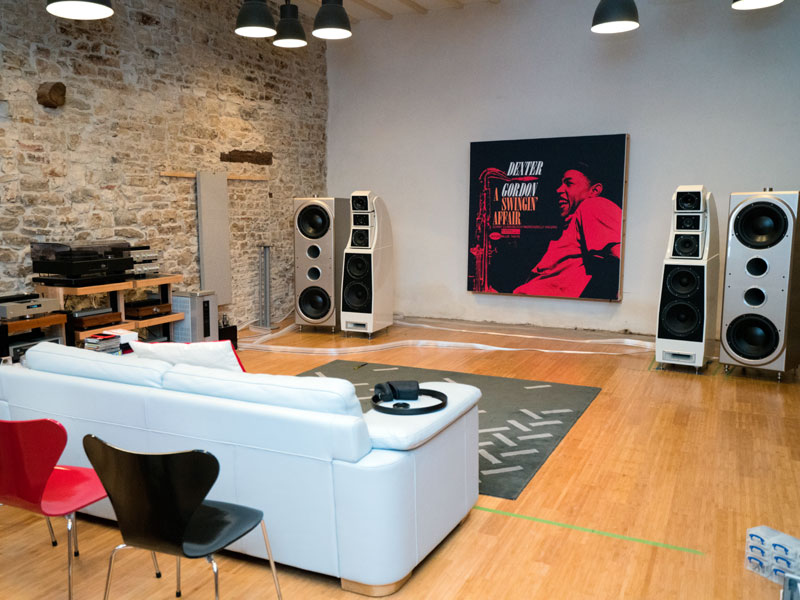Be Careful What You Wish For: Installing Wilson Audio Alexx Speakers and Thor’s Hammer Subwoofers in a New Room
ou might wonder what would persuade me to abandon a dedicated listening room at home in the UK after having gone to all of the trouble and expended the considerable time and cost to create it. The answer is, in a word, Brexit. Only about 5% of the equipment that I review originates in the UK. If the UK leaves the European Customs Union, suddenly everything I deal with will have to transit customs -- and, believe me, that’s not a viable proposition. So as soon as the results of the Brexit referendum were in, the hunt for a new home started in earnest. I won’t bore you with the details (a long, frustrating, yet occasionally amusing tale in itself), but the end result was relocation to a stone-construction winery and conjoined barn dating from around 1632 and located in a small town in northeastern France. Moving house is never easy; moving country is even less so. But the upside in this case was that the new building offered more and larger listening rooms -- three to be precise -- which Dennis Davis has described in some detail in a separate piece. What that article doesn’t cover is the actual process of reestablishing the systems -- and particularly the speakers -- in an entirely new environment. When, in the case of the main listening space (named the Music Room: 21’ wide, 31’ long, 13' high), those speakers extend past the Wilson Audio Alexxes ($109,000 per pair) to encompass a pair of the Thor’s Hammer subs ($24,000 each), you are dealing with serious bandwidth, which makes the exercise about as challenging as it gets. Fortunately, the renovation work on the barn meant that the Music Room only became available around three months after the other spaces (although storing its equipment was a far from trivial exercise) and it still needed some considerable refinement and tuning. The other spaces presented their own specific problems, but the easiest way to describe both the challenges faced and the response to them is through the medium of the main listening room, where the combination of big space, big system and hard deadlines produced something of a perfect storm. For the smaller rooms, the issues might have varied (mainly acoustically) but when it came time to install speakers, the procedure was very much a scaled-down version of the steps taken in the Music Room. With the modular nature of the Alexx and the addition of the Thor's Hammers, the whole speaker system becomes that much more configurable, the setup that much more involved.
My previous room back in the UK was astonishingly symmetrical, with straight, flat walls and right angles in the corners. That made for really predictable response to acoustic treatment as well as equally predictable speaker placement and setup. What you did for one speaker pretty much always went for the other. It made dialing in systems extremely systematic and the results easily repeatable. It was pretty much a case of forward/backward, sideways, toe-in and attitude, treating the pair of speakers as a single connected entity. In the new Music Room, that simply wasn’t so. The wall behind the speakers isn’t at right angles to the side walls, in either the vertical or horizontal plane, nor do the side walls run truly parallel to each other. That makes the distance between the speaker and the boundaries extremely critical. For instance, simply moving a speaker forward or backward will also alter the distance to the side wall, while the slope on the rear wall means that the distance between drivers and their nearest boundary also alters in a complex fashion when you have drive units as widely spaced as the ones in the Thor’s Hammer. The lack of symmetry, both around each speaker and relatively, left and right, means that speaker placement and low-frequency balance need to be dialed in on an individual basis, one speaker and then the other, before you can start working on the pair.
This is the situation that applies to all of the rooms in the new location, to a greater or lesser extent. In fact, there’s barely a straight wall in the place, and if there is, it isn’t parallel or at right angles to anything else. But it’s more critical the wider the bandwidth of the system used, which helps explain why the Music Room presents such a challenge. It also makes spectral changes elsewhere in the system far more noticeable, requiring further speaker adjustment to optimize the sound after each equipment change. And this is all with the benefit of hindsight. Setting up the Alexx speakers with the matching Thor’s Hammer subs from scratch was daunting indeed and required every bit of knowledge I’ve accumulated and some considerable help from Stirling Trayle of Audio Systems Optimized. Walking, or "voweling in" the room to use Wilson-speak, proved invaluable in nailing down our starting points and served to underline just how different the left and right speaker situations are. But having defined our area of operations, working vertically within the selected space (speaking crouched, stooped, upright and on tiptoes) quickly demonstrated just how big a variation small shifts in position were going to make -- and how that variation wouldn’t necessarily be linear or proportional to the movement made. Whereas the UK room produced utterly consistent results -- move the left speaker 1/4" and you’d get the same result moving the right speaker by the same amount -- that clearly wasn’t going to be the case here. Working one speaker at a time, we were able to optimize the bass while also cross-referencing with pink noise to ensure that we weren’t inadvertently introducing a spectral discontinuity. We used the first track on the album This One’s For Blanton (Duke Ellington and Ray Brown [Analogue Productions CAPJ 015]) with its long, descending bass runs and stabbed piano chords for this process, along with the Nordost Set-Up & Tuning Disc for the pink-noise tracks. At this point the speakers were zeroed out, with the cabinets vertical and the midrange and treble arrays set for listening height and a nominally correct listening distance. Once we’d gotten the bass cabinets placed, level with each other (using a laser level) and spiked, it was then time to remeasure the listening distance and reset the head units according to the tables provided. Toe-in was set using the absolutely invaluable LEDR tests from the Nordost disc, which also allowed us to adjust the fore and aft positioning of the sliding EchoBuster panels at the first-reflection points. Seasoned readers may recall that in the previous room -- with its flat side walls -- those sliding panels were equipped with RPG Skyline diffusers. In this room, with its highly dispersive, raw stone walls, the absorption provided by the EchoBusters proved preferable, adding depth and focus to the soundstage, body and dimensionality to the images and a hint of color and warmth to boot.
Having achieved first position, with the speakers’ low-end balanced against the room nodes and the cabinets dead level (front to back, side to side) and perfectly angled, it was time for the fun to really start, with adjustments of first height (to dial in the bass response), rake angle and azimuth (sideways tilt). It wasn’t until we reached these final adjustments that listening involved musical program on both speakers rather than just one, and here again the learning curve bit. No matter how we worked the various angles, the speakers lacked the sense of immediacy and presence that for me at least, makes them so musically compelling. The answer? Actually playing with the alignment of the head units. We ended up with the twin module consisting of the lower-midrange unit and the tweeter, nudged forward by half a notch on their fore-and-aft scale -- possibly a function of the extremely dispersive side walls in the Music Room. Either way, this demonstrates both that the factory guidelines are just that, as well as the benefits of an adjustable, tuneable solution. And that’s before we started playing with the subwoofers.
Normally, when it comes to subs, the approach is to dial in the main speakers first and then roll the sub-bass in below them, using the subwoofer’s controls, and position relative to room boundaries to maximize the benefits and integration. But then there’s nothing normal about Wilson’s Thor’s Hammers. Their substantial cabinets and massive, twin-motor drivers mean that they really don’t need the help provided by room-boundary reinforcement to deliver authoritative low frequencies. As previously discussed, their separate controllers and passive operation ensure that you get to match amplifiers for both the subs and main speakers, a major advantage when it comes to overall system continuity. We were working with both CH Precision M1 stereo amps ($54,000 each) and a VTL S-400 II ($33,500)/Siegfried II ($65,000 per pair) setup, the monoblocks being applied to the subs with the stereo chassis running the main speakers -- an arrangement that makes the most of both the S-400 II’s midrange articulation and the Siegfried II’s bottom-end control. Unlike with the vast majority of subs, with the Thor's Hammers you don’t just get to use way better amps, you are also not subjecting those high-quality amps to the extreme air pressures and mechanical energy inside the cabinets. The end result is the possibility to achieve both superior sonic quality and superior musical integration, a situation that’s further enhanced by the option to adopt close-coupled positioning of the speakers and subs, the Thor’s Hammers being located roughly one node (8") behind and as close as acoustically possible to the outer side of each Alexx. It was then a case of shifting each sub outwards until it too centered on or balanced against a lateral node. With lateral nodes spaced at around 5", as you can see from the pictures, we still achieved almost adjacent placement between speakers and subs. Once the lateral spacing of the Hammers was fixed, the really fine-tuning was again accomplished using the spikes to adjust height and rake angle of each cabinet individually -- first to an initial position, and then later those height and rake settings were further refined once the main speakers had really bedded in. Rake angle was actually set slightly negative, to match that on the Alexx cabinets. This seems to provide better integration and a more coherent wavefront (which isn’t exactly surprising) but also frees up the bass, allowing it to breathe more easily, floating notes above the stage (which is surprising). It actually echoes previous experience with the Sasha 2, which sounded notably better with the bass elements raked slightly back and it’s interesting to note that the new Sasha DAW uses a sloping baffle. I used Track Audio’s solid (as in non-decoupled) stainless-steel feet under the subs, a choice which made small height and angular adjustments considerably easier than the standard spikes, although that’s really just a question of time and perseverance. But what quickly became apparent was that you can ill afford to neglect these final, tiny steps in the setup process. Their musical impact was both significant and clearly audible, even if arriving at final optimum settings took a considerable amount of time and different material. The good news is that confining the final adjustments to height and rake angle make them both easier to carry out and far more precise. It’s a lesson that applies to more than just subs. If you’ve got a floorstanding speaker, the spikes will do an awful lot more than simply stop it from wobbling. The other thing to take away from this is both the advantages of using a separate deep-bass solution when it comes to room matching and low-frequency optimization and the musical benefits of employing a pair of passive subs. The advantages of the Thor's Hammer's topology are just as relevant to the WATCH Dogs or (to a slightly lesser extent) the Wilson Benesch Torus, much more affordable subwoofer solutions that easily outperform those A/V-orientated bass howitzers with endless DSP adjustments and kilowatts of internal class-D power. When it comes to musical material, passive subs are definitely the way to go.
The lack of symmetry within the room and the absolute necessity to deal with the positioning of each speaker and subwoofer individually made this initial setup significantly more demanding, time-consuming and complex than in my old room, but -- and it’s a very big but -- the musical results are also significantly better, with greater dimensionality to images, a much more even spectral balance top to bottom, with greater weight, focus and transparency at low frequencies -- normally an either/or balancing act but one that seems to hit a natural equilibrium here. Music steps away from the speakers far more easily and delivers the recorded performance even more convincingly. At the same time, while the old room was an audio electron microscope, the new Music Room has upped the resolution by a remarkable margin, with differences between components, recordings or settings within the system, writ clear. As a process it may have been demanding, imposing a steep learning (or should that be relearning) curve, but it also served as a stern reminder of just how critical speaker setup really is -- and how taking anything for granted risks seriously eroding ultimate system performance. The infrastructure and physical support elements have improved, the dimensions are more nearly optimum and the non-symmetry is theoretically advantageous, but the net result is to throw a heavier burden onto speaker setup. The subdivided concrete slab, that gives the speakers, electronics and listening area each their own mechanically separate supporting surface, plays its part, but the solid bamboo flooring, glued directly to the concrete allows tiny incremental movements of even the largest and heaviest speakers, without which this process and the end result would be impossible to achieve. This room allows me to extract
considerably more performance from the system, to hear more of the performances I play,
but I have to work harder to achieve it, learning more about the products as I do so.
Which I guess should come as no great surprise: gains always come with costs. It may not
be as forgiving or easy to work with as the old room, but the Music Room certainly lives
up to its name. |

